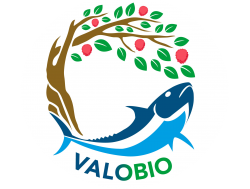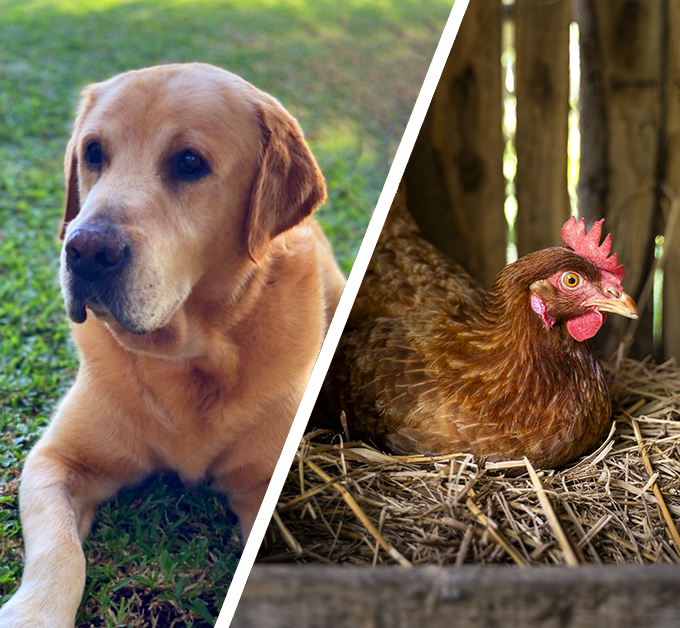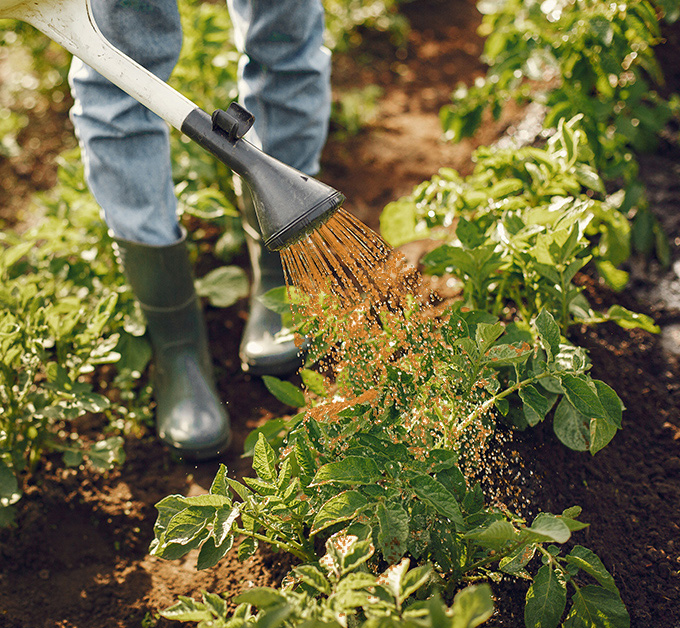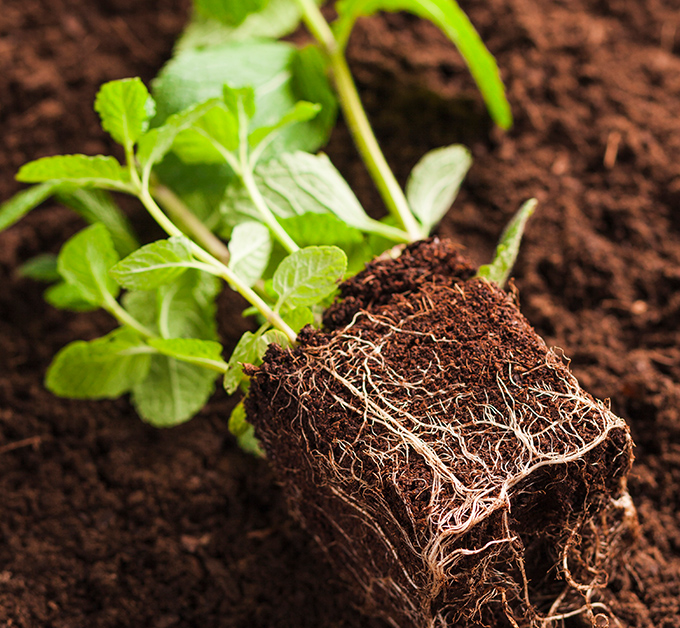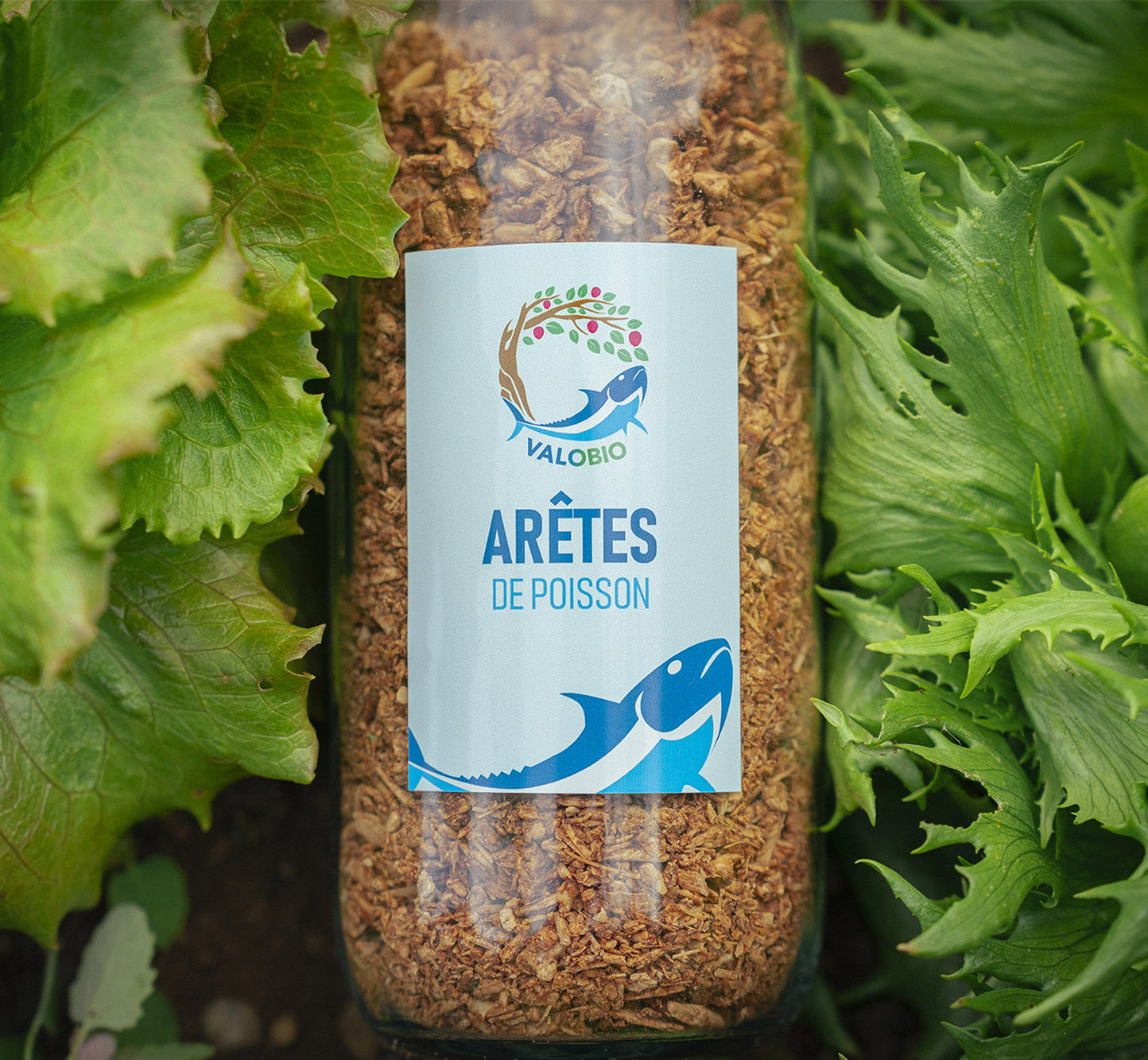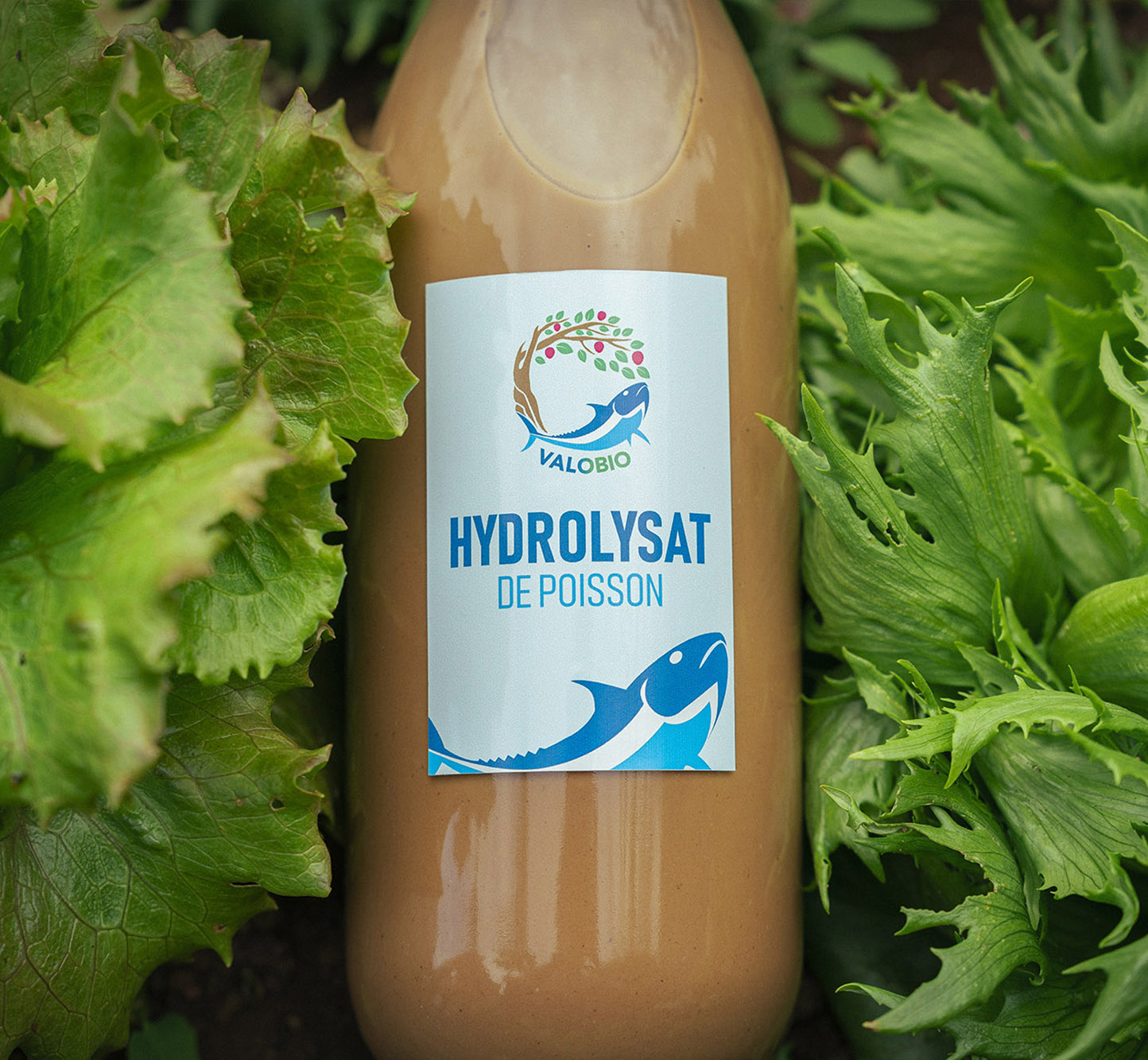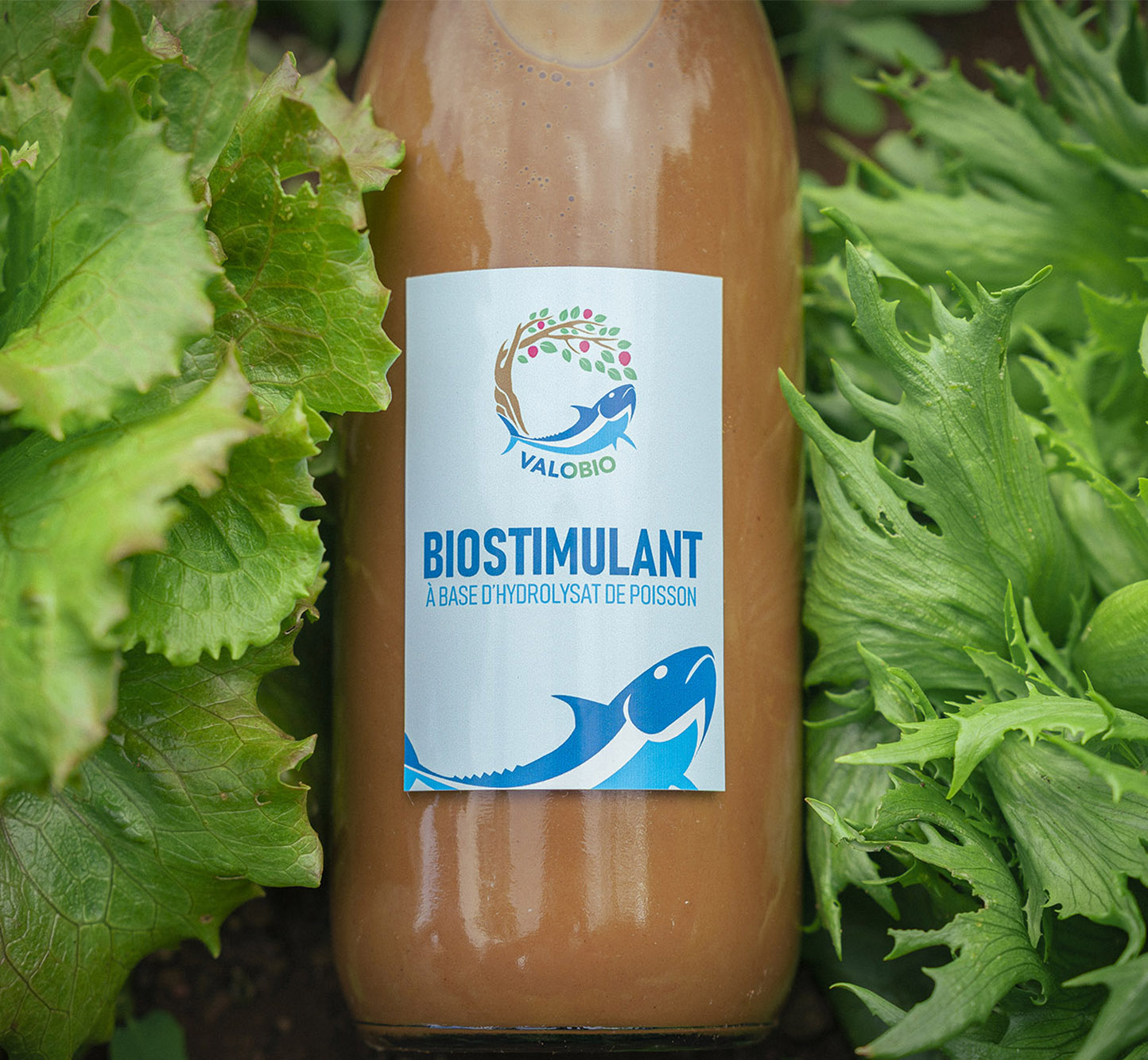Our Solutions
for agriculture and animal nutrition
Our products are available in different volumes:

A controlled process

Export : A lot of opportunities
The quality of our products means we are open to international export.
VALOBIO’s experience enables us to offer a turnkey plant anywhere in the world.
If you have volumes of fish “waste”, build your plant with our help !
FAQ
Why is the pH of protein hydrolysate acidic?
The transformation of fish coproducts into hydrolysate takes place in an acidic environment. The fact that our product is acidic means it can be better preserved over time. Finally, having an acid pH means that the hydrolysate can be used as a protective film on plants against various possible attacks (insects, fungi).
Why is this co-product bone available?
In the fish coproducts we recover from professional fishermen, we have heads, fins, tails, skin and bones. As our processing is too fast to liquefy bones immediately, we have a co-product on the production line, a grind of bones between 2 and 12mm. This grind is rich in phosphorus, calcium and nitrogen, making it very interesting for animal feed and agriculture. The 2mm bones remaining in the product dissolve rapidly in view of the hydrolysate’s ph and their size.
Why did you decide to convert fish coproducts into a liquid product instead of flour, as is the practice elsewhere?
In nature, at room temperature, the liquefaction (process of making a solid body liquid) of “fish waste” takes place thanks to the action of the viscera, bacteria and enzymes degrading the material. It’s a natural transformation!
We wanted to reproduce this natural process, but we don’t recover the viscera.
In fact, most fishermen eviscerate their fish on board ship, to avoid damaging and contaminating the “noble” parts of the fish.
Valobio’s innovation not only liquefies this “unused waste”, but also turns it into a liquid hydrolysate that can be used as an organic fertilizer or raw material for animal feed.
Being liquid means that the farmers can use it easily, saving time and manpower. Its use as a raw material facilitates the coating, palatability or binding of other materials used in animal feed.
How to store products?
For all Valobio products, we recommend keeping them in their original packaging, in a dry environment, away from light. For liquid products, keep them concentrated and undiluted!
During processing, you sieve the hydrolysate. Why do you do this?
Our fish coproduct transformation process, hydrolysis, is very rapid (1h30), compared with liquefaction in nature at ambient temperature (3-10 days in tropical environments). So a mineral part (bones) of the coproduct grind is not liquefied, as it is made up mainly of calcium and phosphorus. After hydrolysis, the hydrolysate is left with edges measuring less than 12mm (grinder screen). With the basic aim of creating a liquid fertilizer that is easy to use in the irrigation system, we sieve the hydrolysate through a 2mm sieve to remove these ridges. These are a co-product for the process line.
Why did you choose to use hydrolysis to add value to fishing by-products?
The hydrolysis process cuts the links in the protein chains into peptides (chains of amino acids), which are then easier to digest and more readily assimilated by all living organisms, whether plant or animal.
Why does hydrolysate have a brown color?
It’s the natural color of fish by-products when they’re ground. This crushed product then undergoes hydrolysis, i.e. an initial low-temperature treatment, and finally flash pasteurization. This double action accentuates the original brown/pink color of the grind, like a fish soup,
There are no colorants!
How long can we store your products?
There’s no expiration date on which the product will spoil. The only recommendation for liquid products before use is to shake to mix, as lipids settle slightly on the surface.
They recommend our solutions
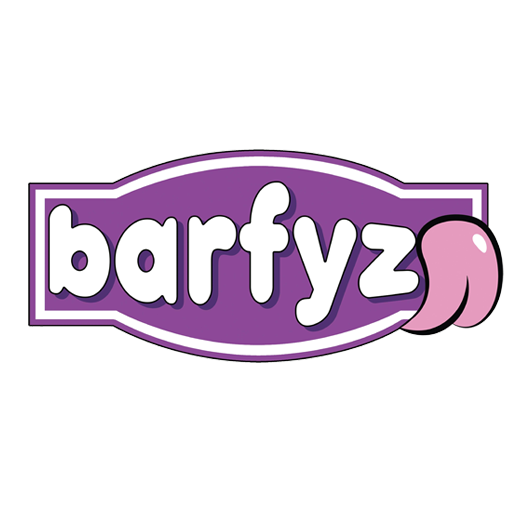
"Always eager to bring quality novelty to our pets, we had the chance to discover VALOBIO : a VERY conclusive test : animals of our customers loves our new recipes. In addition, the VALOBIO team is attentive and very responsive... we can only recommend"

"Valobio took the opportunity to enhance the marine coproducts of the Meeting by developing innovative marine hydrolysates with our assistance. These products rich in proteins, peptides and minerals are recognized as biostimulants in fertilizing applications and are an interesting source of bio-peptides for aquaculture and animal feed.’'
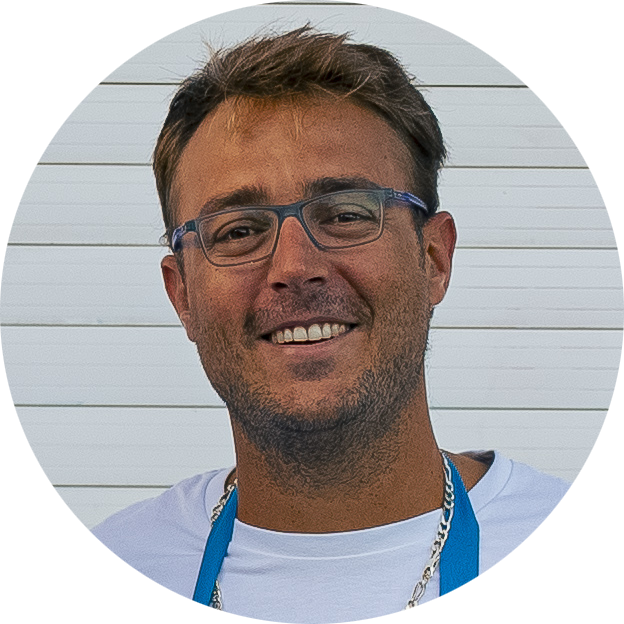
"We have supported VALOBIO from the outset. As part of our eco-responsible approach to fishery resources, we entrust our fish coproducts, produced during the cutting and preparation of fish, to Valobio, so that they can be recycled and processed locally for the people of Reunion Island !"
